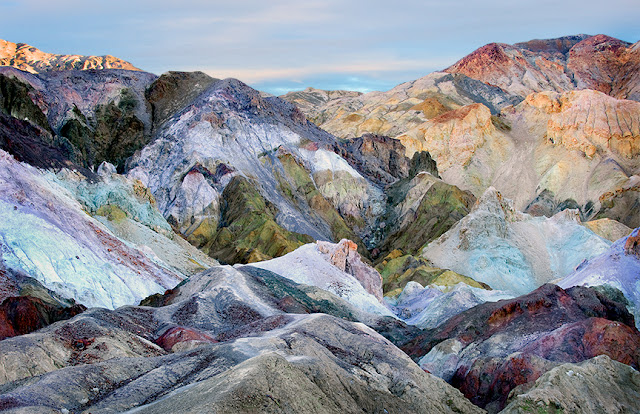The Painted Earth
This series of photographs depicts formations in a constant state of erosion, revealing more color as time passes. The pastel colors embedded in these formations are unique, caused by a wide variety of minerals. I am enamored by the combination of texture and pastel color, as well as the strange beauty of this landscape.
 Artist’s Palette in Death Valley is an area noted for a variety of rock colors. These colors are caused by the oxidation of different metals, iron compounds produce red, pink and yellow, decomposition of tuff-derived mica produces green, and manganese produces purple.
Artist’s Palette in Death Valley is an area noted for a variety of rock colors. These colors are caused by the oxidation of different metals, iron compounds produce red, pink and yellow, decomposition of tuff-derived mica produces green, and manganese produces purple.When I am presenting at the art festivals I participate in it’s not uncommon to be asked if I “photoshop” (as a verb) my images. I use Photoshop to process my images but what the person means is do I enhance my images. Visit any of these locations, wait for the right light and you’ll also see these same colors.
Thanks for looking, see more at www.jamesevangelista.com





Comments
Post a Comment